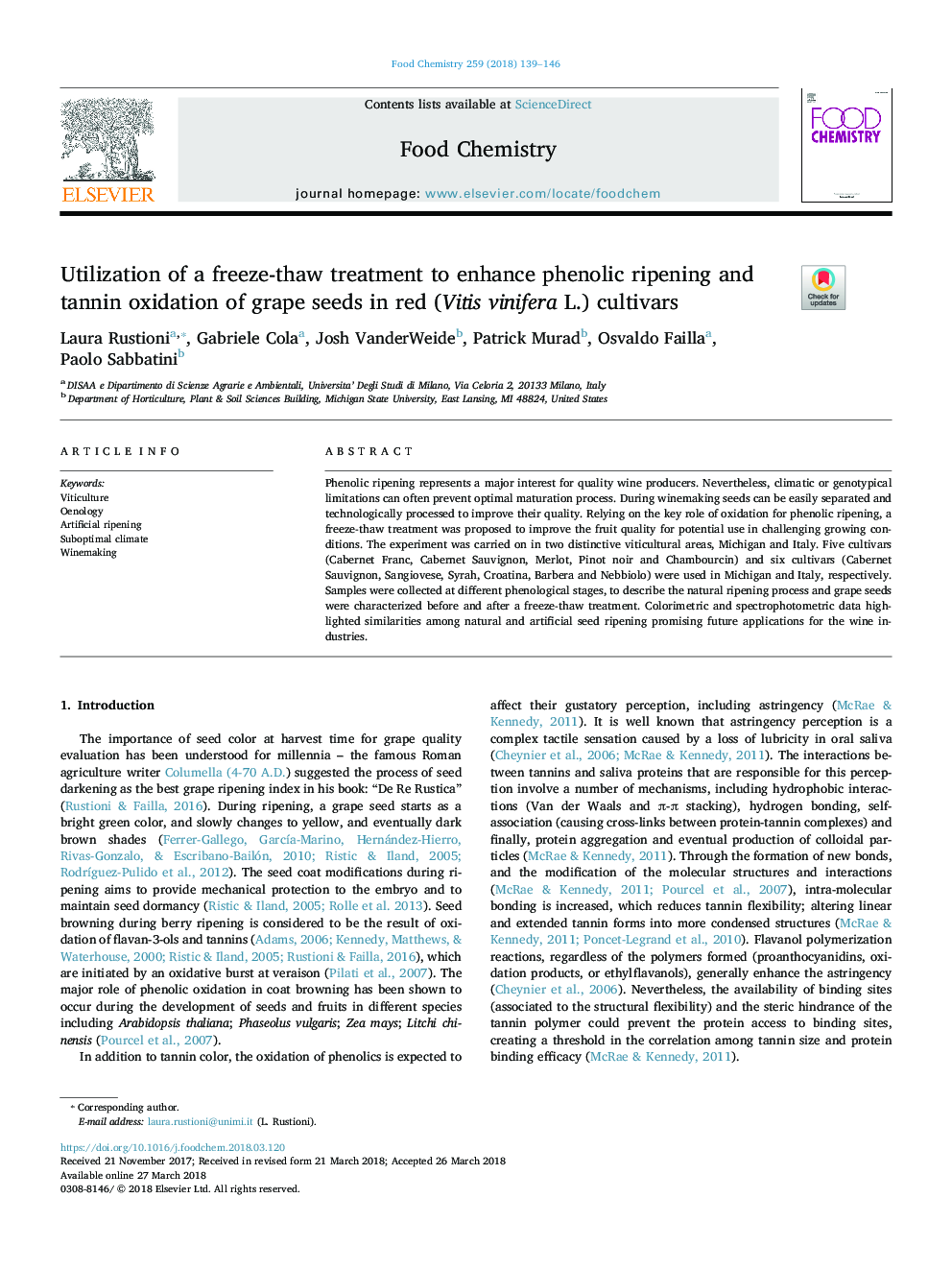| Article ID | Journal | Published Year | Pages | File Type |
|---|---|---|---|---|
| 7585047 | Food Chemistry | 2018 | 8 Pages |
Abstract
Phenolic ripening represents a major interest for quality wine producers. Nevertheless, climatic or genotypical limitations can often prevent optimal maturation process. During winemaking seeds can be easily separated and technologically processed to improve their quality. Relying on the key role of oxidation for phenolic ripening, a freeze-thaw treatment was proposed to improve the fruit quality for potential use in challenging growing conditions. The experiment was carried on in two distinctive viticultural areas, Michigan and Italy. Five cultivars (Cabernet Franc, Cabernet Sauvignon, Merlot, Pinot noir and Chambourcin) and six cultivars (Cabernet Sauvignon, Sangiovese, Syrah, Croatina, Barbera and Nebbiolo) were used in Michigan and Italy, respectively. Samples were collected at different phenological stages, to describe the natural ripening process and grape seeds were characterized before and after a freeze-thaw treatment. Colorimetric and spectrophotometric data highlighted similarities among natural and artificial seed ripening promising future applications for the wine industries.
Keywords
Related Topics
Physical Sciences and Engineering
Chemistry
Analytical Chemistry
Authors
Laura Rustioni, Gabriele Cola, Josh VanderWeide, Patrick Murad, Osvaldo Failla, Paolo Sabbatini,
